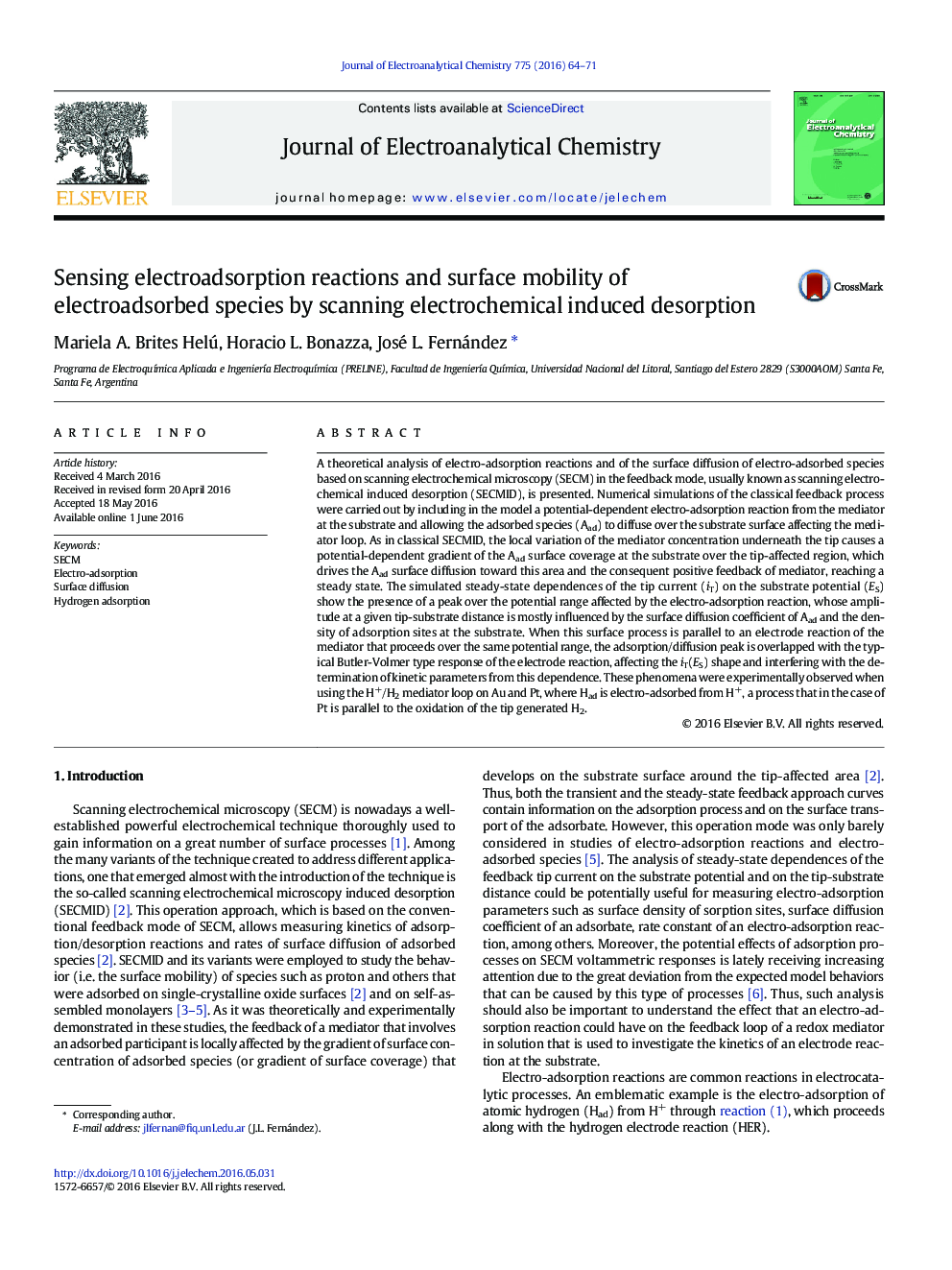| کد مقاله | کد نشریه | سال انتشار | مقاله انگلیسی | نسخه تمام متن |
|---|---|---|---|---|
| 217827 | 463170 | 2016 | 8 صفحه PDF | دانلود رایگان |
• A SECM model involving electroadsorption reactions and surface diffusion is presented.
• Surface diffusion leads to a peak-shaped iT(ES) dependence in steady state.
• This peak is sensitive to the surface diffusion coefficient and the adsorption site density.
• The peak may overlap the response of an electrode reaction measured by SECM.
• Electroadsorption/surface diffusion of atomic hydrogen on Au and Pt is analyzed.
A theoretical analysis of electro-adsorption reactions and of the surface diffusion of electro-adsorbed species based on scanning electrochemical microscopy (SECM) in the feedback mode, usually known as scanning electrochemical induced desorption (SECMID), is presented. Numerical simulations of the classical feedback process were carried out by including in the model a potential-dependent electro-adsorption reaction from the mediator at the substrate and allowing the adsorbed species (Aad) to diffuse over the substrate surface affecting the mediator loop. As in classical SECMID, the local variation of the mediator concentration underneath the tip causes a potential-dependent gradient of the Aad surface coverage at the substrate over the tip-affected region, which drives the Aad surface diffusion toward this area and the consequent positive feedback of mediator, reaching a steady state. The simulated steady-state dependences of the tip current (iT) on the substrate potential (ES) show the presence of a peak over the potential range affected by the electro-adsorption reaction, whose amplitude at a given tip-substrate distance is mostly influenced by the surface diffusion coefficient of Aad and the density of adsorption sites at the substrate. When this surface process is parallel to an electrode reaction of the mediator that proceeds over the same potential range, the adsorption/diffusion peak is overlapped with the typical Butler-Volmer type response of the electrode reaction, affecting the iT(ES) shape and interfering with the determination of kinetic parameters from this dependence. These phenomena were experimentally observed when using the H+/H2 mediator loop on Au and Pt, where Had is electro-adsorbed from H+, a process that in the case of Pt is parallel to the oxidation of the tip generated H2.
Journal: Journal of Electroanalytical Chemistry - Volume 775, 15 August 2016, Pages 64–71
